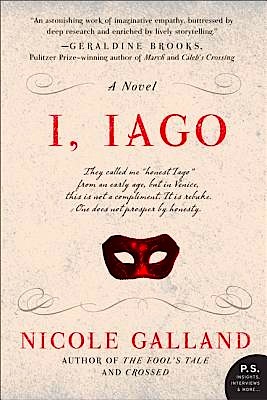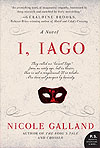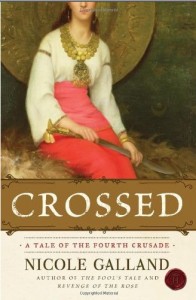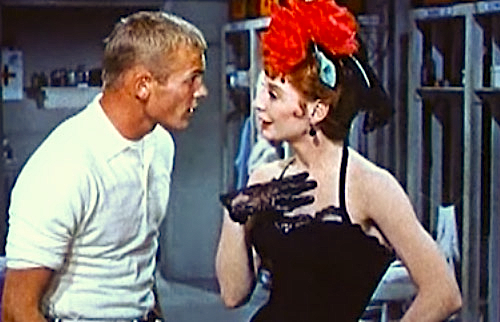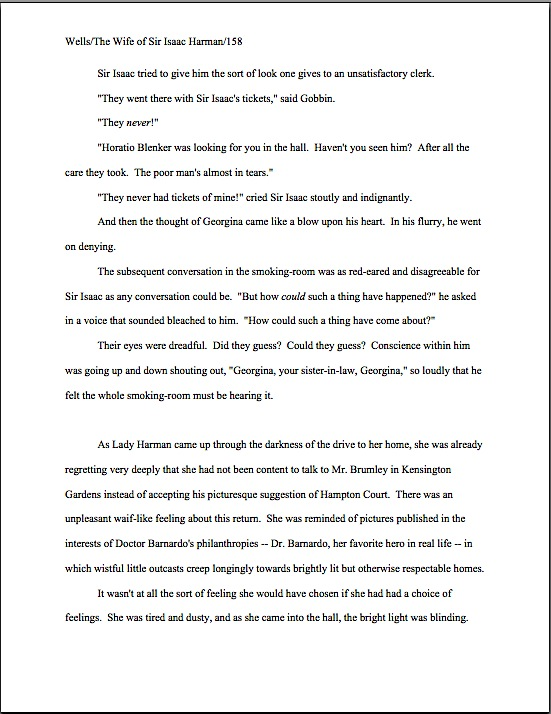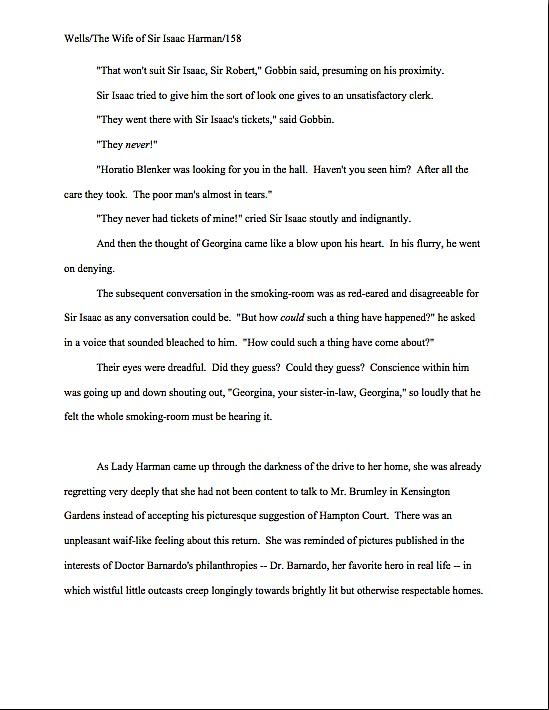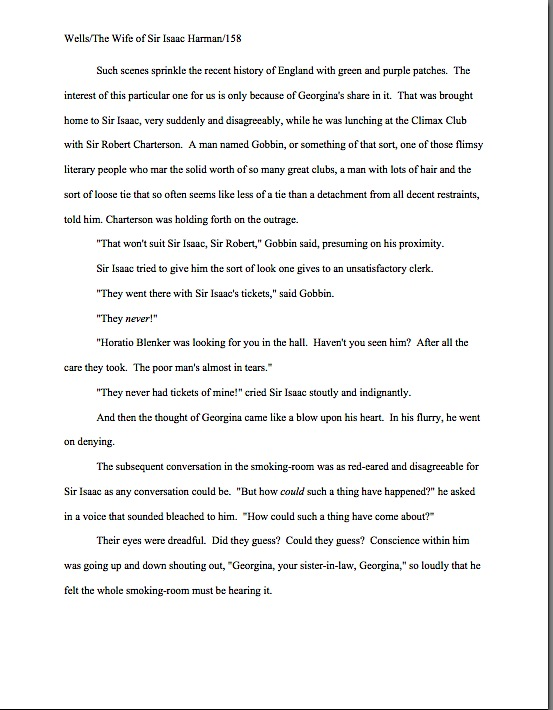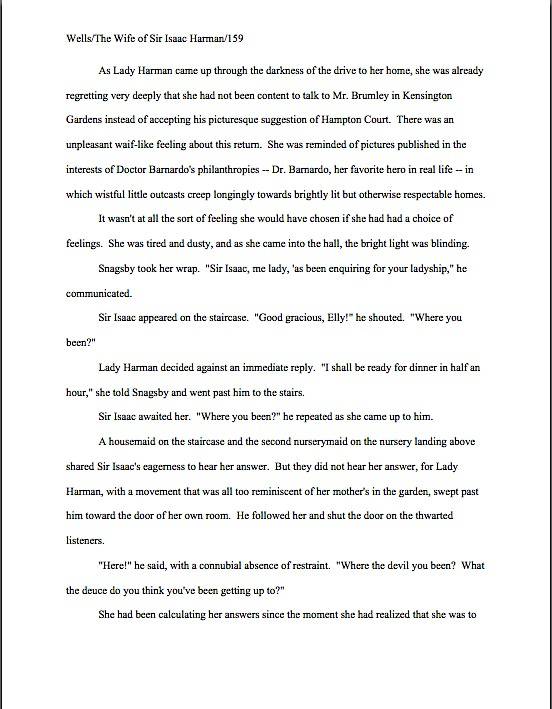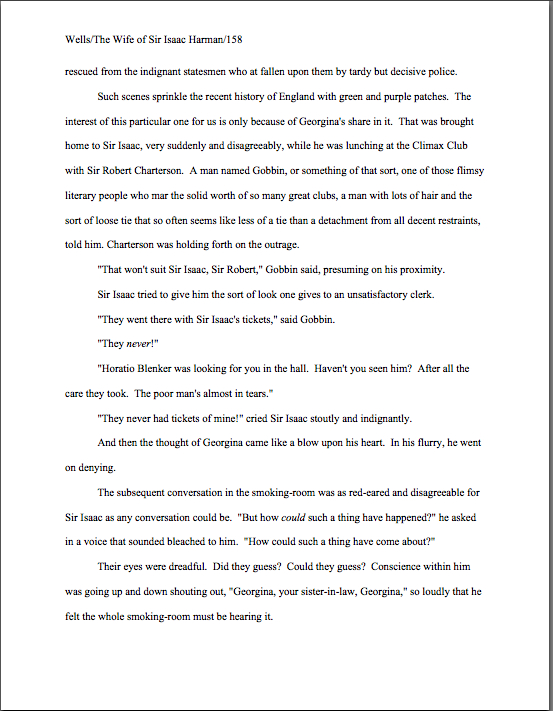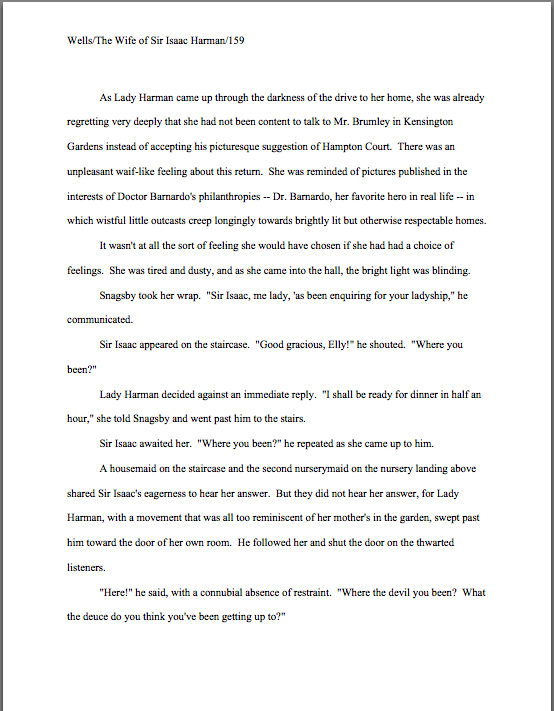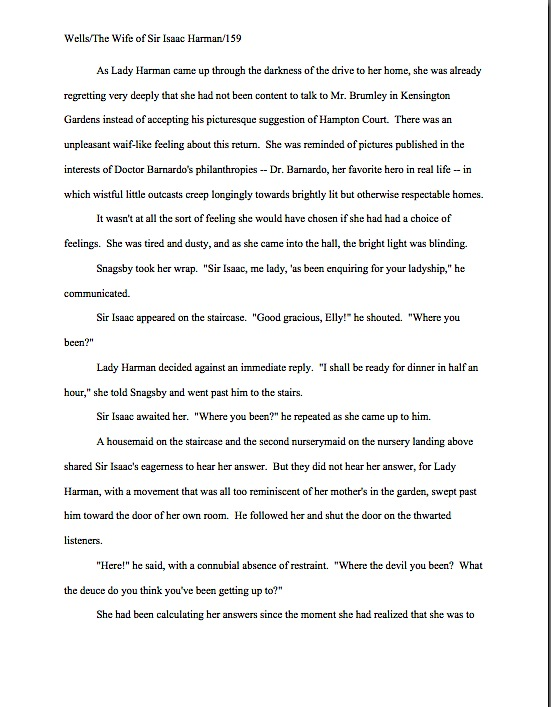This time of year, the Furtive Non-Denominational Gift-Giver sees it all the time: a reason to move otherwise good girls and boys from the Nice to the Naughty list. Yet often, as both he and our old pal, Millicent the agency screener, know only too well, the difference between a properly-punctuated sentence and one that is, well, not, lies in a simple slip of the writer’s finger — or lack of one. Take a gander at the type of hastily-scrawled note that often greets our St. Nick.
Hello Santa. Thanks for any presents you might see fit to leave old boy. Wow do I ever appreciate it.
– Janie
No wonder the otherwise jolly elf weeps at the sight: clearly, the Punctuation Vacuum has beaten him to this household. Either that, or Janie has really, really lazy fingers. The note he had expected to see nestled next to a plate of cookies would have read like this:
Hello, Santa. Thanks for any presents you might see fit to leave, old boy. Wow, do I ever appreciate it.
– Janie
Let me guess: to many, if not most of you, these two notes are essentially identical: the words are the same, right, so the meaning must be? That’s an understandable interpretation, given how often we all now see direct address and exclamation commas omitted all the time. Indeed, some modes of electronic expression, such as news program bottom-of-the-screen crawls and Twitter, seem actively to discourage proper punctuation.
But that doesn’t make it right. Santa’s a stickler for rules.
As it happens, so are Millicent and those of us who edit for a living. Punctuation matters to us — and, frankly, folks in publishing tend to laugh when aspiring writers express the astonishingly pervasive opinion that it doesn’t.
Why the ho, ho, ho? Well, leaving aside the perfectly reasonable proposition that one of the basic requirements of a professional writer is the consistent production of clearly expressed, grammatically correct prose, in some cases, improper punctuation can alter a sentence’s meaning.
And that, boys and girls, can only harm self-expression. Take, for instance, the two faux pas in the title of this post.
Thanks for the cookies Millicent.
What’s that I hear on the roof, reindeer?
Most readers would assume, as those of you who didn’t notice that commas had been purloined from Janie’s original note probably did, that what she actually meant to say was this:
Thanks for the cookies, Millicent.
What’s that I hear on the roof? Reindeer?
That’s not what the first versions actually said, though, was it? Basically, Janie operated on a presumption evidently shared by an amazingly high percentage of queriers, literary contest entrants, and manuscript submitters: that it’s the reader’s job to figure out what the author probably meant, not the writer’s job to express it so clearly that there would be no question.
In practice, most of us are perfectly willing to translate casual communications into more comprehensible prose, at least mentally. People often tap out or scrawl notes in a hurry, or, since the advent of mobile electronic devices, under less-than-ideal conditions. It’s relatively safe, then, to presume that your third-best friend will understand if that text message you sent while hanging upside down from the monkey bars omitted a comma or two.
Writing intended for publication is expected to adhere to a higher standard, however: even an editor wowed by the sentiments expressed in that last set of examples would not seriously consider publishing them without revision. Although the rise of on-screen editing has increased the number of punctuation, spelling, and grammar errors that slip through editorial fingers and onto the printed page — nit-picks are significantly harder to catch on a backlit screen than in hard copy — no one who reads for a living would believe for a second that clarity and proper punctuation don’t matter. A manuscript that seems to imply that the writer believes they are unimportant not only is unlikely to impress a pro — to an experienced agent or editor, it simply screams that this is a writer who will require extra time, effort, and, yes, proofreading.
Why might that harm your submission’s chances? Think about it: if the agent of your dreams already has 127 clients, who is his Millicent more likely to regard as a viable candidate for #128, the writer who expects her to guess whether What’s that I hear on the roof, reindeer? means what it literally says, or the writer whose prose is so clear that she’s not left in any doubt?
Remember, too, that your garden-variety agency screener or contest judge has very little of a writer’s prose upon which to judge talent and facility with language. How on earth could Millicent possibly know for certain whether the speaker of that first sentence was simply sliding back up the chimney while he was writing, and thus was too busy to devote the necessary thought to the beauty and rigors of proper punctuation, or simply was not aware of the relevant rules? She’s not allowed to base her reading upon what she guesses a writer meant, after all; she can only evaluate what’s actually on the page.
All of which is a nice way of saying: don’t expect her to cut you any slack. A writer familiar with the rules of punctuation and conscientious about applying them is simply less time-consuming for an agent to represent than one who believes that the fine points of how a sentence looks on the page doesn’t really matter. Someone at the manuscript’s future publishing house will take care of the copyediting, right?
Well, no. Not if Millicent or her boss, the agent of your dreams, stops reading after the second missing direct address comma on page 1.
Yes, really. Since this particular rule is pretty straightforward, it’s fairly common for screeners and contest judges to regard non-adherence — or, equally pervasive in submissions, uneven adherence — as an indicator of, if not necessarily poor grammar in the manuscript as a whole, then at least an authorial lack of attention to detail. Any guesses as to why detail-orientation would be a desirable trait in an agency’s client?
Slap a great, big gold star on your tree if you leapt to your feet, shouting, “By gum, a detail-oriented writer could be trusted to produce clean manuscripts!” You’re quite right, shouters: since few agencies employ in-house editors (although some agents do like to edit their clients’ pages), signing a writer who had already demonstrated that he regards the world as his proofreader would inevitably be a more time-consuming choice than snapping up one that could be relied upon to spell- and grammar-check his own manuscripts. On a revise-and-resubmit deadline too short for anyone at the agency to proof pages, that could be the difference between selling a book to a publisher and rejection.
Comma placement is starting to seem a trifle more relevant to your life, isn’t it? Fortunately, the rules governing direct address and exclamations are quite easy.
Hey, wake up. Were you aware that you were snoring, Janie?
There — that wasn’t so difficult, was it? Hey is an exclamation, so it is separated from the rest of the sentence by a comma. And because that second sentence was directly addressed to Janie, a comma appears between the rest of the sentence and her name.
Armed with those valuable precepts, let’s revisit the punctuation choices that made the Furtive Non-Denominational Gift-Giver choke on his milk and cookies — or cognac and truffles, as he always insisted on being left for him in the Mini household throughout my childhood. (My parents said that he deserved the upgrade for shinnying down our unusually small flue.) How do they look to you now?
Hello Santa.
Thanks for any presents you might see fit to leave old boy.
Wow do I ever appreciate it.
Thanks for the cookies Millicent.
What’s that I hear on the roof, reindeer?
Now that you’re looking for those commas, the paucity of them — and, I hope, the extra one in that last sentence — is distracting, is it not? Let’s talk about why. Sentences 1 and 4 are aimed at Santa and Millicent, respectively, right? The names are a tip-off that each requires a direct address comma.
Hello, Santa.
Thanks for the cookies, Millicent.
Sentence #2 is a bit trickier, since what Janie is calling the reader (old boy) is not a proper noun. If we don’t apply the direct address rule here, though, the most logical interpretation is actually this:
Thanks for any presents you might see fit to leave for the old boy.
Yet Janie’s household does not contain any old boy, or indeed any boys at all — and if Santa knows when they are sleeping and knows when they are awake, he must logically be aware of where said boys are sleeping, must he not? He might be forgiven, then, for finding this sentence perplexing. Fortunately, all it would take is a single stroke of the pen to render Janie’s intended meaning crystal clear.
Thanks for any presents you might see fit to leave, old boy.
No question that the reader — Santa, presumably, if Janie’s been a good girl this year — is the old boy being addressed, right? Now that we’ve cleared up that cosmic mystery, what should we note-proofers do with this?
Wow do I ever appreciate it.
Wow is an exclamation — and we have a rule for that, do we not? Let’s try applying it. While we’re at it, why not allow Janie’s punctuation to reflect the intensity of her gratitude?
Wow, do I ever appreciate it!
If you’re ever in doubt about whether an expression is sufficiently exclamatory to require separation from the rest of the sentence, here’s a nifty test: vehement exclamations can stand alone. As in:
Wow! Do I ever appreciate it!
Oh, my! What a beautifully-wrapped present!
Heavens! What an enormous cake! You shouldn’t have gone to all of that trouble, Madge!
What a difference a punctuation choice can make to a sentence’s meaning, eh? (See what I just did there? Eh is an exclamation, albeit not a particularly intense one.) A detail-oriented punctuator could become even more creative, depending upon context. Let’s have some fun.
Wow — do I ever appreciate it? I would have thought my reaction to your having given me a rabid wolverine last Christmas and the Christmas before would have told you that.
Oh, my, what a beautifully-wrapped present…if you happen to believe that bacon is an appropriate wrapping medium for a desk lamp.
Heavens, what an enormous cake. You shouldn’t have gone to all of that trouble, Madge: as much as we all enjoyed seeing your immediate family leap out of that enormous pie at Thanksgiving, that’s really the kind of surprise entrance that works only once, don’t you think?
Speaking of how punctuation can alter meaning, our remaining example presents some difficulties, doesn’t it? Let’s take another peek at it.
What’s that I hear on the roof, reindeer?
At first glance, this may appear to be a proper use of direct address: the narrator was simply speaking to a reindeer that happened to be lingering nearby. In today’s incredibly rich fantasy novel market, it’s not at all difficult to imagine a context in which that comma use would make sense.
“What’s that I hear on the roof, reindeer?” Janie shouted. “Your ears are better than mine.”
Blitzen shook his antlers in annoyance. “Ceilings are opaque, you know. I can only fly; I don’t have X-ray vision.”
However, being an intimate friend of the writer’s — we could hardly be closer — I know that the original sentence was tucked within a thriller. I ask you: does a direct address interpretation make sense here?
“What’s that I hear on the roof, reindeer?” Janie whispered.
The Easter Bunny did not bother to stop stuffing presents into his basket. “Oh, stop jumping at every sound. Santa’s not due for an hour.”
“I still say that we should have hidden in a closet,” the Tooth Fairy hissed, “and waited until after ol’ Kris dropped off the swag.”
“And let Fat Boy snag all the cookies?” The rabbit snapped off a small branch from the tree to use as a toothpick. “I’m in it for the sugar, baby.”
“Then we should have gone to the Minis,” the fairy grumbled. “They have truffles.”
Blitzen’s hoof poked into the small of Janie’s back. “Move, sister, and you’ll find yourself with a face full of tinsel.”
Since the reindeer doesn’t enter the scene until five paragraphs after Janie’s speech, it seems unlikely that she’s addressing him. What the writer intended to convey by that comma was not direct address, but something closer to my original suggestion:
“What’s that I hear on the roof?” Janie whispered. “Reindeer?”
In fairness, though, you can see why even a meticulous self-proofreader might not have caught this one. If Janie had speculated that the sounds were caused by an inanimate object, that comma might have passed muster.
“What’s that I hear on the roof, falling shingles?” Janie whispered.
Unless this is a book about a madwoman or a psychic whose ability to cajole roofing substances into telling her Santa’s whereabouts, direct address doesn’t make sense here, does it? Even a skimmer is unlikely to fall into that interpretive trap. Several alternate constructions would obviate the possibility entirely, though. The first option should look slightly familiar.
“What’s that I hear on the roof?” Janie whispered. “Falling shingles?”
“What’s that I hear on the roof — falling shingles?” Janie whispered.
Am I sensing some growing excitement about the possibilities? “Hey, Anne,” some of you exclaim, beautifully demonstrating your grasp of how a comma should offset an exclamation, “something has just occurred to me, you sneaky person.” (Direct address!) “Since the natural habitat of both direct address and exclamations is conversation, wouldn’t it make sense to zero in on dialogue while proofreading for these particular faux pas? If I were in a hurry, I mean, and didn’t have time to read my submission or contest entry IN ITS ENTIRETY, IN HARD COPY, and OUT LOUD?”
Not a bad timesaving strategy, exclaimers — they do tend to congregate in text written in the second person. (Hey, I’m talking to you, buddy!) You might be surprised, though, at how often direct address and exclamations show up in first-person narratives, or even chattier-voiced third-person narratives. For instance:
Oh, God, I was afraid she would say that. My brain spun wildly, searching for an answer that would not make me look like the schmuck I actually was. By Jove, I was in a pickle.
Before anyone suggests otherwise, may I hastily add that the rookie strategy of attempting to make first-person narration sound more like common speech (as opposed to what it’s intended to represent, thought) by eliminating necessary punctuation and grammar has become awfully hard to pull off in a submission, at least for adult fiction or memoir. You wouldn’t believe how often Millicent sees text like our last example submitted like this:
Oh God I was afraid she would say that. My brain spun wildly searching for an answer that would not make me look like the schmuck I actually was. By Jove I was in a pickle.
Or even — sacre bleu! — like this:
OhmyGodIwasafraidshewouldsaythat. My brain spun wildly searching for an answer that would not make me look like the schmuck I actually was. By Jove I was in a pickle.
Yes, yes, we all understand that both versions could arguably be regarded as conveying breathlessness. So could this:
Oh, God, I was afraid she would say that. I felt every last oxygen molecule being sucked out of my lungs.
While style choices vary, naturally, from book category to book category — there honestly is no adequate substitute for reading recent releases of books similar to yours, particularly those written by first-time authors, to gain a sense of what is considered stylish these days — generally speaking, relating what’s going on via actual words tends to be considered better writing than offbeat presentation choices. All the more so if those words show what’s going on, as we saw in that last version, instead of telling it — or requiring Millicent to perform a dramatic reading of the text in order to grasp the fully intended meaning.
Oh, you thought that OhmyGodIwasafraidshewouldsaythat didn’t convey an expectation that the reader would try saying it out loud? Isn’t the sound of this sentence spoken as a single word the point here?
Style is not the only reason that you might want to give careful thought to whether non-standard presentation choices would be more effective than other means of narration, however. While they may seem like a shortcut, they can actually mean more work for you. Not only must any such punctuation and grammar voice choices be implemented with absolute consistency throughout an entire first-person narrative– quite a bit harder than it sounds, if one happens to know the rules or wants to be able to use Word’s grammar-checking function — but honestly, it’s really only clever the first few times a reader sees it done.
Trust me, any experienced Millicent or contest judge will have seen this tactic crop up too often to find it original at this late date in literary history. And how could either of them tell on page 1 whether the omissions were the result of a manuscript-wide authorial choice or the writer’s not being conversant with proper comma use? Heck, are they even sure that the writer of that last version even knows where the comma key is located?
Judgmental? You bet. If Millicent, a literary contest judge, and Santa’s job descriptions have anything in common, it’s that they are tasked with separating those who make an effort to follow their respective spheres’ recognized standards of niceness from those who do not. Rejection is the literary world’s lump of coal, available year-round.
That’s the bad news. The good news is that, unlike so much of the manuscript submission process, proper comma use lies entirely within the writer’s control. Personally, I find that rather empowering — unlike style judgment calls, which must necessarily rely in part upon Millicent’s personal reading tastes, punctuation is governed by rules. And rules can be learned.
Does that huge thunk of jaws hitting the floor reverberating throughout the ether indicate that some of you had been thinking about acceptance vs. rejection purely in terms of writing style? If so, you’re hardly alone: why do you think so many submissions and even queries turn up on Millicent’s desk apparently unproofread? Or spell-checked? Obviously, there are a heck of a lot of aspiring writers out there who think punctuation, spelling, and grammar just don’t matter — or that it’s an agent’s job to see past rule violations to story and talent.
Had I mentioned that to the pros, these things matter very much? Or that in publishing circles, providing error-free manuscript pages containing only sentences whose meanings are clear on a first reading is considered the minimum requirement of professional writing, not an optional extra?
Frankly, every writer who has taken the time to learn her craft should be rejoicing at this. Imagine how hard would it be to get on Santa’s Nice list if you had no idea what he considered nice.
While I’ve got you pondering the hard questions, here’s another: is resting your book’s future on a manuscript draft that does not consistently apply the rules you already know people in publishing expect to see respected really any less of a stab in the dark? Wouldn’t it be a better long-term strategy, as well as a better use of your scant writing time, to invest in making sure that the factors you can control are tweaked in a manner more likely to land you on Millicent’s Nice Job list?
Ah, that suggestion got under some skins, didn’t it? “But Anne!” bellow those who find thinking about rules a barrier to the creative process — and you are legion. “I understand that it’s the writer’s job to make a story come to life on the page, not the reader’s job to decipher convoluted text, but to be absolutely truthful, I don’t feel completely comfortable wielding all of the various rules of grammar and punctuation. I had kinda hoped that once I landed an agent and sold a book, the kind folks who handle books for a living would walk me through all of that.”
I’m glad you brought this up, wobbly rule-appliers — this is one of the greatest divides between how the publishing world thinks of what constitutes a well-written manuscript and how most aspiring writers tend to envision it. To a pro, the technical side of writing is not separable from the overall writing quality; to a new writer, though, punctuation, grammar, spelling, and even clarity are primarily sentence-level issues, easily fixed down the line.
No wonder, then, that it comes as such a shock to most first-time queriers and submitters to learn that the overwhelming majority of manuscripts get rejected on page 1. While the pros see a book’s opening as a representative writing sample, writers regard it as a minuscule fraction of a larger work, each page of which is entitled to its own assessment.
“What do you mean, a couple of punctuation, spelling, or clarity problems on page 1 could have triggered rejection?” they wail, and who could blame them? “Shouldn’t a book be judged by — wait for it — the writing in the whole thing?”
Perhaps, in principle, but very, very few readers wait until the end to come to conclusions about a book, even outside the publishing industry. A Millicent at a well-established agency will read literally thousands of submissions every year. If she read each in its entirety, she would have time to make it through only hundreds.
Believe it or not, this way actually provides a writer with a fresh idea and original voice with a better shot of impressing her. It means fewer book concepts are weeded out at the querying stage than would be necessary if agencies routinely assigned Millicents to read every single syllable of every single submission.
And, lest we forget, to a professional reader, a hallmark of a fabulous new literary voice is its consistency. The Great American Novel should read as lyrically on page 1 as on page 147, right? And shouldn’t it all sound like the same author’s voice?
See why I always encourage writers to read their manuscripts IN THEIR ENTIRETY, IN HARD COPY, and OUT LOUD before submitting them? All too often, aspiring writers new to the game will start sending out their work practically the moment after they type THE END on a first draft, without double-checking that the voice, style, and — as an editor, I must ethically add this — story are 100% consistent throughout the manuscript. It’s completely normal, however, for a first-time novelist’s voice and sense of the story to develop throughout the writing process; going through, figuring out what you like best about your own writing, and revising the whole so it sounds like that (to use the technical term) before you submit can increase your story’s chance of winning friends at an agency by leaps and bounds.
Or, to put it another way, are you the same writer you were the first day you sat down to work on your book? Aren’t you better at conveying your intended meaning now? And, if you take a long, hard look at your objection to Millie’s rejecting manuscripts on page 1, isn’t part of your chagrin that she might not read long enough to get to your best writing?
Heavy thoughts for a holiday, perhaps, but the Literature Fairy’s annual gift to those of us who work with writers is an awareness of just how many of you lovely people spend the last few weeks of December kicking yourselves for not having landed an agent or gotten published in the previous year. If the past is prologue, a phenomenally high percentage of you will translate those feelings into a New Year’s resolution to be a more active aspiring writer next year — to send out a barrage of queries, for instance, or to come up with a really solid list of agents to query. Perhaps you’re going to finish that manuscript, or get the one an agent requested eight months ago out the door. Or maybe, finally, you are going to rearrange your schedule so you can write a specified number of hours per week, rather than the more popular method of trying to squeeze it in whenever you can find the time.
All of these are laudable goals — don’t get me wrong. I would like to suggest, though, that while you are shuffling through the resolution possibilities, you consider adding one more: promising yourself that this will be the year that you spend January sitting down and reading your manuscript from beginning to end, in hard copy, as a reader would, to gain a sense of what is best about your own writing.
Because, really, wouldn’t you have an easier time presenting your work professionally if you didn’t just know that it’s good, but also why? And wouldn’t you be happier if Millicent judged your page 1 if it actually did represent a consistent voice and style throughout the book?
Just a thought. While you’re reading, of course, you could always humor me by keeping an eye out for omitted commas.
Hey, nobody ever said that making it onto Millicent’s Nice Job list was going to be easy. Who did you think she was, Santa?
Enjoy the holiday, everybody; try not to run afoul of any reindeer. I hear that you wouldn’t want to run into Blitzen in a dark alley. Keep up the good work!



